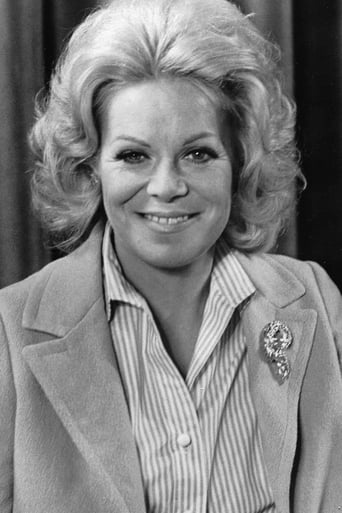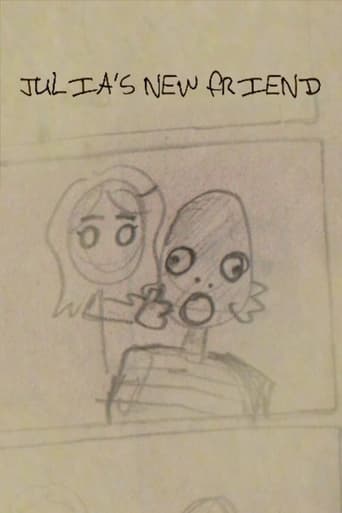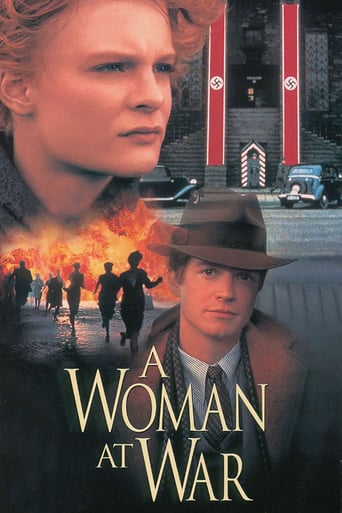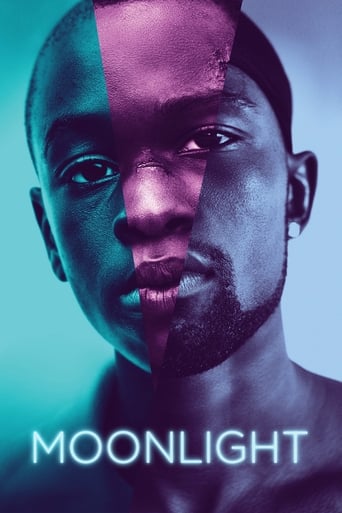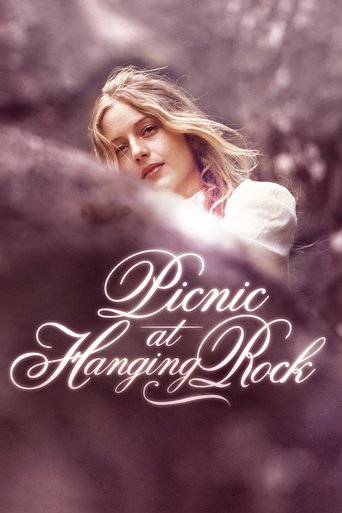

Picnic at Hanging Rock (1975)
In the early 1900s, Miranda attends a girls boarding school in Australia. One Valentine's Day, the school's typically strict headmistress treats the girls to a picnic field trip to an unusual but scenic volcanic formation called Hanging Rock. Despite rules against it, Miranda and several other girls venture off. It's not until the end of the day that the faculty realizes the girls and one of the teachers have disappeared mysteriously.
Watch Trailer
Cast


Similar titles
Reviews
The scenes of the Australian outback were stunning, The acting was overly theatrical and punctuated with bizarre hand gestures. The characters never develop any depth so your reaction is purely based on visuals - Headmistress; Callous, French teacher; Fake, Dance teacher; Simpering, Miranda; Queen Bee Flake with the usual followers. The older couple having a picnic sitting like wooden dummies? The boy driven to attempt to find the girls - driven by what? The glimpse of a black clad ankle? The token LUG? Kept waiting for something - anything to happen. Yawn.
This film is certain to yield many varied interpretations, primarily because it doesn't give any answers. A class of Victorian-era school girls take a day trip to Hanging Rock - a large rock formation shaped by volcanic activity in the Australian countryside. They idle about in the forestry before a group of four wander off alone and climb to the peak, but only one comes back, and what's more, one of the staff members, who ran off on her own, also disappears. The search for the missing is taken up by the police, along with two men who were present at the time of the disappearance - one English upper class, one Aussie working class, with their vernacular completely at odds with each other. The girls can not be found, and while the search continues, we spend time learning the backstories of various other characters inside the school - from the headmistress, to the pupils, to the gardeners and the maid. The unsolved disappearance shrouds each male character a suspect, and every single character a great mystery that might reveal an important piece of the puzzle, despite seemingly being caught up in their own unrelated troubles, such as money to pay the school fees, and poetry recitals. The first half of the film is youths romantic allure, a teenage girls optimism. The second half is a discovery of the pain residing underneath the perfectly manicured surface, with the journey into the rock a symbolic representation of passing from one to the other - a child to adult. The great anticlimax however, is that the case remains unsolved.As it is not based on a true story, this irresolution is not an unfortunate by-product of real life events, rather a purposeful artistic decision, and it becomes clear we are watching not a detective story, but an art film using the story telling techniques of one, in order to maintain suspense. We are hoodwinked. The clues given to follow the crime - clocks stopping at 12, scratch marks on hands yet not body - are simply red herrings. Sherlock Holmes could not unwind it, because there is nothing to unwind. The clues were never intended to lead answers, as opposed to narrative tools taking us from A to B, and if you're anything like me, to be purposefully mislead under false pretences does not leave a good aftertaste.If we are to take a figurative rather than literal interpretation of this film, we can find meaning in the symbolism used. Based on a novel, the author Joan Lindsay was an artist before she was a writer, and from the framing of shots to the constant symbolism, this film is reminisce of an old oil painting in motion. The three girls who are lost to the rock are seen removing their shoes and stockings moments before their disappearance, while the missing teacher was last seen in her underwear - shoeless. Meanwhile, the only girl to come back from the rock did not remove her shoes or stockings. In artwork, the removal of shoes was commonly symbolic for sexuality - the undressing - which is as sure a sign as any that their disappearance is metaphoric for the loss of virginity. The somewhat phallic looking rock becomes the representation of man, and set on Valentines Day, the film depicts the dangers women face when wandering into this wild new territory, and leaving their protected innocence behind. For the older staff member, who had previously described volcanic eruption as though male ejaculation, it may represent a lifetime of repressed sexuality, as others have commented.It is beautiful to look at, from the casting to the costumes, and the juxtaposition of those characters and costumes against the bright Australian bushland. The old masterwork paintings are some of the most terrific images created, and not enough films share their influence. It also sounds terrific, with the constant and varied bird chatter, to the foreboding ticking of clocks, classical music, and a haunting otherworldly pan flute. The camera movement is at times languid, ebbing and flowing between characters and their surroundings, soaking up the atmosphere. It is the epitome of the 70's. All hazy images, dreamy vibes, mythic, nature based philosophy, that was just as likely (or more) to have stemmed from the herb than the library. It is a very complex and indirect way for one to express themselves, and likely to appeal those more concerned with feeling than logic.If Picnic at Hanging Rock proves anything, it is the power of mystery. It may frustrate the heck out of our rational minds, yet leaves an enchanting impression. Finding it better to watch than to think about afterwards, to me it is a picnic that probes the tastebuds, but does not fill the stomach.
1990. Several students from an all-female college inexplicably vanish into thin air while spending a St. Valentine's Day outing in the Australian wilderness.Director Peter Weir ably crafts a hypnotically dreamy atmosphere that's in equal degrees ethereal, enigmatic, and sinister, vividly captures the suffocating repressiveness of the early 20th century Victorian era, lets the compelling story unfold at a leisurely pace, and makes excellent and evocative use of the titular ugly and uninviting main location. Cliff Green's oblique, yet still intriguing script offers plenty of pungent criticism of the stifling zeitgeist of the Victorian period and the deep-seated need to escape from sexual and social repression into a better more permissive world.Moreover, it's superbly acted by a top-rate cast, with especially stand-out contributions from Rachel Roberts as stern headmistress Mrs. Appleseed, Anne-Louise Lambert as the sensual and entrancing Miranda, Karen Robson as the perky and fetching Irma, Jane Vallis as the nerdy Marion, Dominic Guard as the smitten Michael Fitzhubert, Christine Schuler as annoying whiny frump Edith, Kirsty Child as compassionate teacher Miss Lumley, and Margaret Nelson as rebellious troublemaker Sara. Russell Boyd's sumptuous cinematography delivers a wealth of stunning and beautiful visuals. Best of all, Weir's admirable refusal to provide some kind of explanation for the disappearances gives this film its own singularly arresting cinematic allure.
The film seems to be a simple story of a group of students going to a rural picnic in Hanging Rock (a lava geological formation with rock pinnacles).But the movie goes far beyond.It's pure existentialismBehind the usual situations, seems to be a mysterious power operating on the girls (and on the viewer) whom are dragged into an eerie maze. The perceptions begin to experience relevant changes. Everything feels differently: comments and opinions do not seem to come from any teenager girl, but from an ancient wisdom knowledge related with spiritualism and non-dualism. For instance:-Marion:"A surprising number of human beings are without purpose, though it is probable that they are performing some function unknown to themselves".-Miranda: "What we see and what we seem are but a dream, a dream within a dream".-Miranda: "Everything begins and ends at the exactly right time and place".They seem to have entered into a dreamland dimension, suspended in time. An ethereal energy which makes all acts are led by a high level of awareness and absolute sense of freedom.However, according to Sara, Miranda predicted her own fate: she would not return. So she could have had a prior intuition about her predestination. Her ethereal mood, mystery and beauty are perfectly portrayed by Anne-Louise Lambert.We have a story in which fate and power of nature are intertwined. In the end, the most relevant fact is the feeling that remains in some viewers long after having seen the movie: the feeling of void, nothingness, the inexplicable, the beyond...10/10


